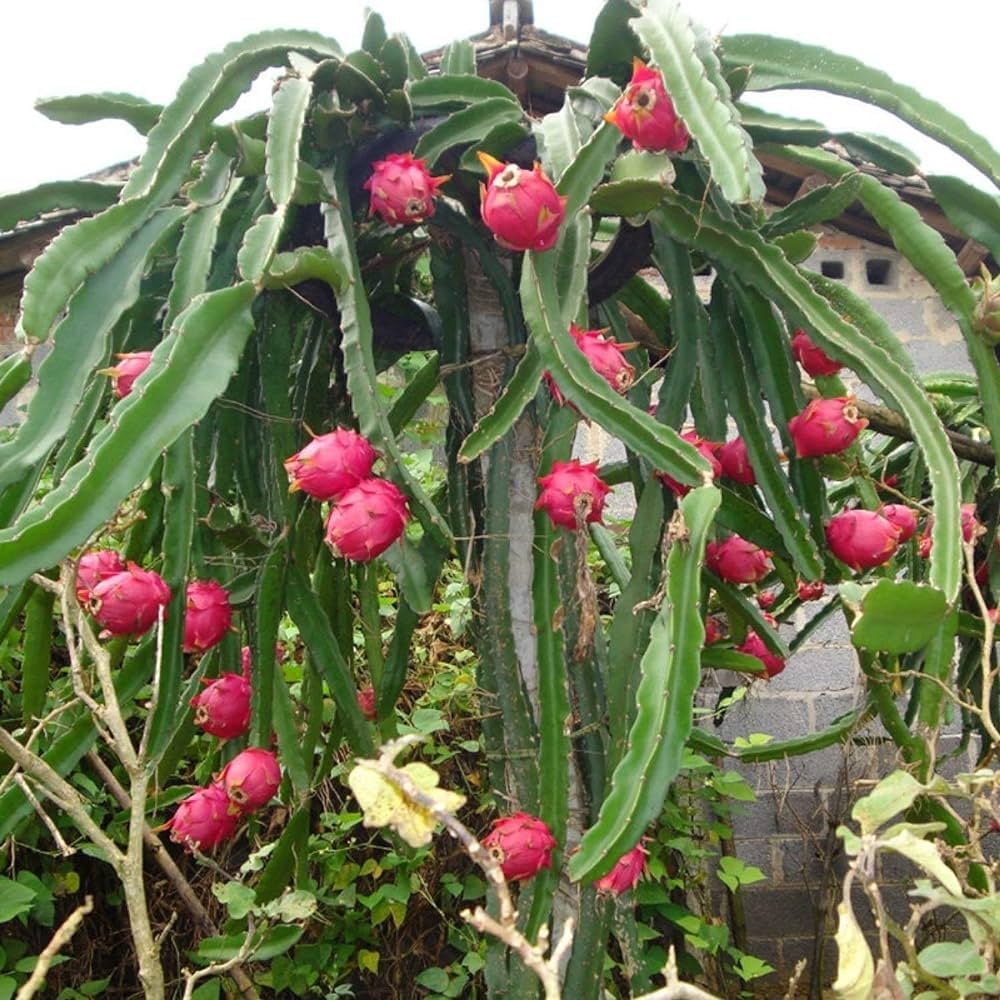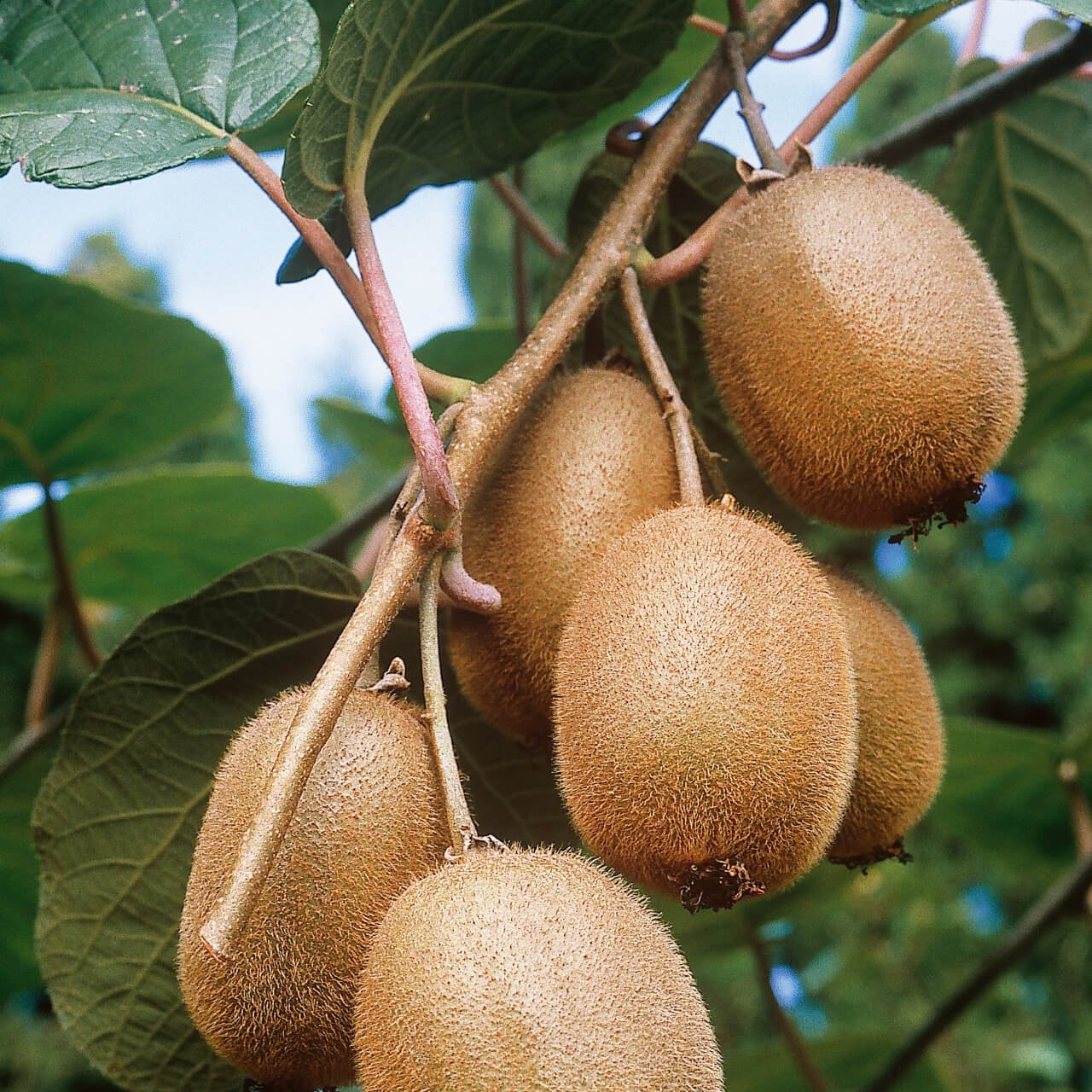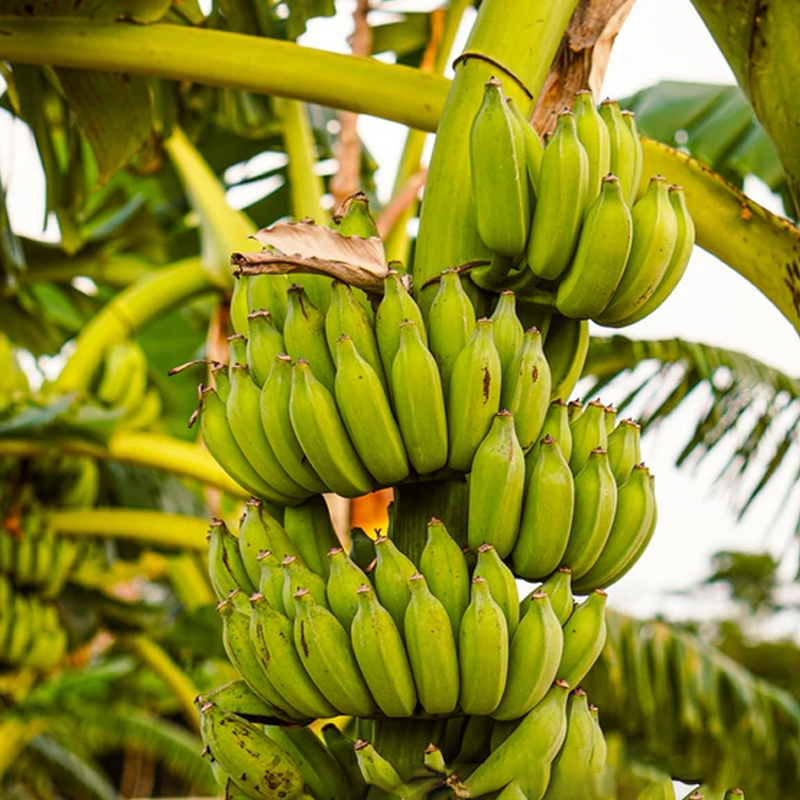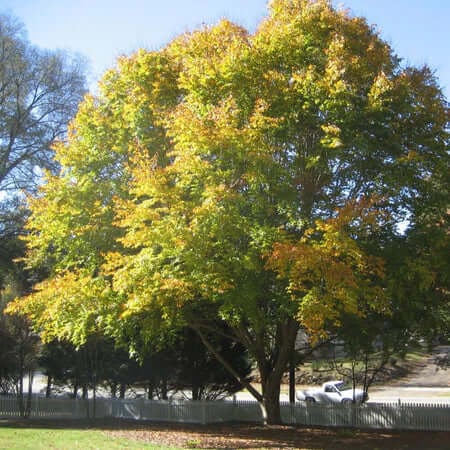
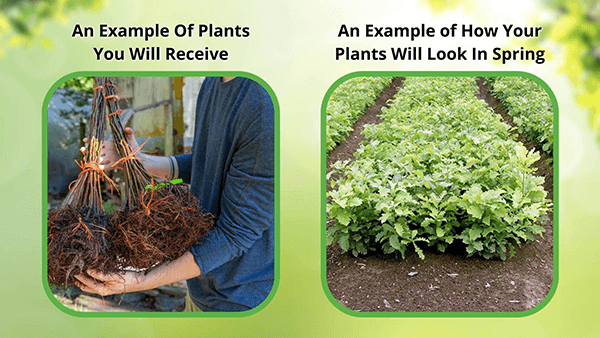
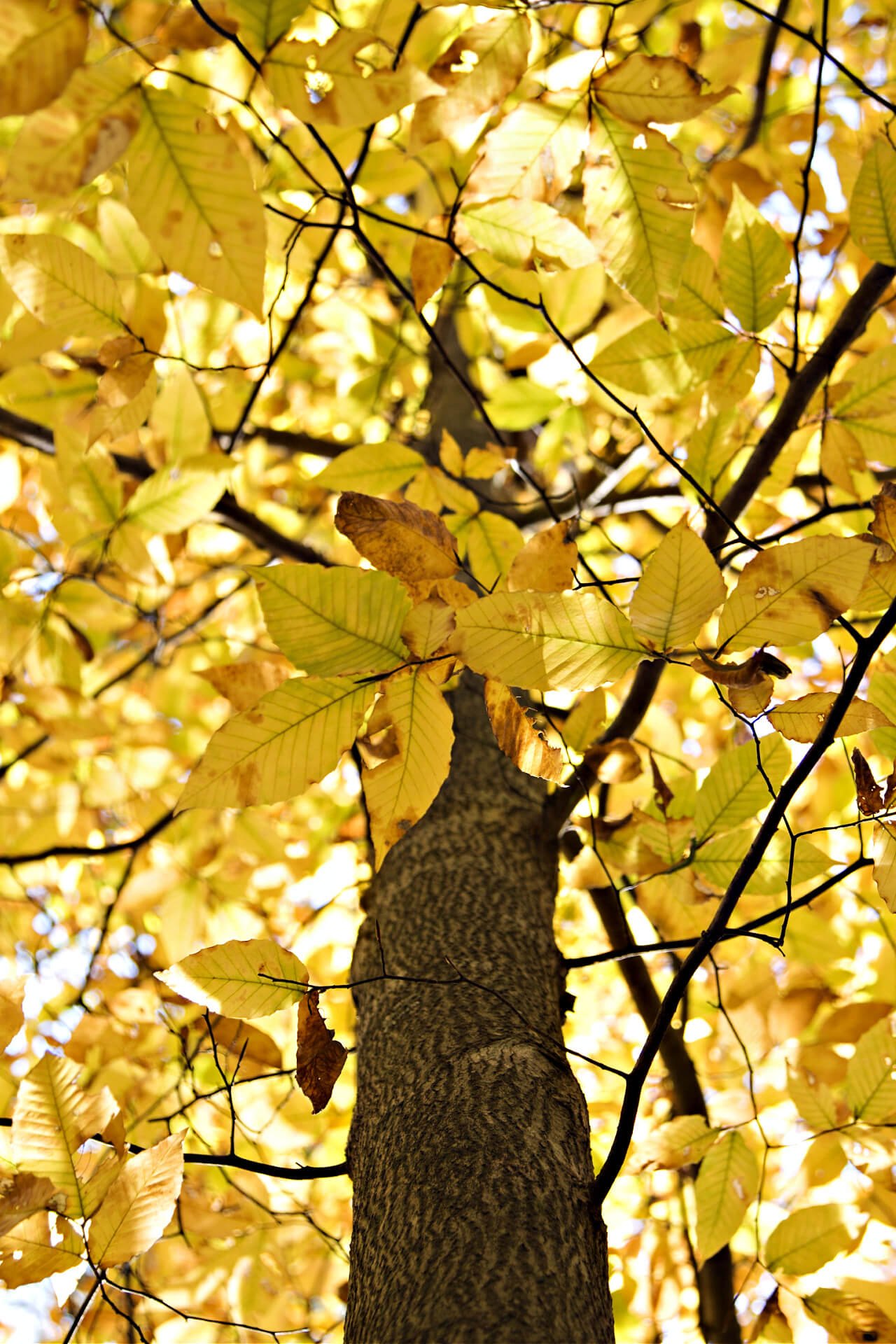

American Beech Seedlings
Provides abundant wildlife habitat
Promotes healthy forest ecosystems
Long lifespan ensures enduring beauty
Thrives in
ZONE 3ZONE 4ZONE 5ZONE 6ZONE 7ZONE 8ZONE 9This plant ships:
Ships November 20251 Year Guarantee on all plants
American Beech Seedlings: Fagus Grandifolia
When you think about adding beauty and depth to your landscape, look no further than American Beech seedlings. These trees offer stunning foliage and a unique charm that can transform any space into an inviting oasis. With their ability to grow into majestic giants over time, planting them is a rewarding investment that comes with the promise of shade, wildlife support, and ecological benefits. In this we'll walk you through everything you need to know about successfully planting and caring for these remarkable saplings. Whether you're a novice gardener or an experienced landscaper, understanding how to nurture these trees will help you cultivate a thriving environment that you and future generations can enjoy. Let's dig in!
They are deciduous trees native to North America, known for their attractive foliage and strong presence in landscapes. When considering planting these saplings, it's important to understand their specific growing conditions, preferred soil types, and proper care techniques to ensure successful establishment.
Growth Conditions for American Beech Seedlings
They thrive best in well-drained, loamy or sandy soils. Their preference leans towards a slightly acidic to neutral pH, ideally ranging from 4.5 to 6.5. This pH level mimics their natural growing conditions, allowing them to absorb essential nutrients effectively. If you're unsure about your soil's pH, using a home testing kit can be quite helpful. By ensuring your soil meets these requirements, you set a solid foundation for your saplings' growth journey.
Moreover, understanding the importance of consistent moisture levels cannot be overstated.
Consistent moisture is vital for them, as they enjoy soil that stays moist but isn't waterlogged. Think of them like your favorite houseplant that thrives with regular watering but wilts if left sitting in soggy soil. It's essential to monitor rainfall during their growing season and adjust your watering routine accordingly-especially in drier spells. Mulching the base of the saplings can help keep moisture while also suppressing weeds that compete for resources.
To gauge if your saplings are getting enough water, you can stick your pointer finger into the dirt; if it feels dry at that depth, it's time for a drink!
Lastly, considering spacing when planting these saplings is crucial too.
When planting multiple of them, keep in mind that recommended spacing is between 20 to 30 feet apart. This allows each sapling sample room to grow both above and below ground without competing for sunlight or nutrients. It's almost like giving them their own personal space to flourish! Spacing also enhances air circulation around the plants, which is key in reducing the risk of diseases that can arise in densely packed areas.
According to landscape experts, proper spacing can lead to healthier growth rates and enhance the overall aesthetic of your planting area as these majestic trees mature.
Together, maintaining optimal soil conditions, consistent moisture levels, and providing adequate spacing will put yours on a path toward strong and healthy growth. This foundation sets the stage for understanding how these saplings physically develop and present themselves over time.
Physical Traits of American Beech Seedlings
Recognizing them involves a keen eye for detail, as these youngsters display a variety of distinctive features. Their leaves are one of the most striking characteristics; they exhibit an oval shape with a glossy surface and serrated edges that catch the light beautifully. This unique leaf structure isn't just pretty to look at; it also serves a functional purpose. The prominent veins enhance photosynthesis, allowing the tree to thrive during crucial early growth stages. When autumn rolls around, they transform into a stunning shade of bronze, offering a visual feast that signals change in the seasons.
Observing closely, you'll find that the leaves of them might remind you of other tree varieties, yet their distinct toothed edges set them apart. They serve as a reminder that details matter greatly in nature's design. As saplings grow, these nuances become pivotal for gardeners aiming to make informed choices about their landscape designs.
Moving down from the vibrant leaves, let's talk about the bark. Initially smooth and grey, it undergoes a significant transformation as the tree matures. Over time, this bark develops a textured appearance that not only adds character but also provides protective benefits. Nature has equipped them with a durable skin that withstands various environmental stressors.
As we shift our focus towards the roots, it's essential to highlight that the root system of them is both robust and influential in their growth trajectory.
While they spread wide, note that these roots tend to stay relatively shallow. This characteristic means that young trees create a strong lateral network just below the surface, which can aid in absorbing moisture and nutrients efficiently. A well-established root system is vital for stability especially as these trees aim toward their impressive mature height potential of 50-70 feet.
Have you ever wondered how tall these saplings typically are when you first encounter them? Generally, you can expect them to be around 6 inches tall at planting time, presenting wide opportunities for growth under favorable conditions. It's exciting to think about how such small beginnings can lead to magnificent giants!
Keeping their defining traits in mind-not just for identification but enhancement of care-ensures success in nurturing these remarkable trees from saplings to maturity. Understanding these physical characteristics lays the groundwork necessary for effectively supporting their growth.
Next, we will explore the essential practices for cultivating these wonderful saplings into thriving trees.
Planting Methods and Care Instructions
Planting them requires attention to detail, as the method chosen plays a important part in the growth and health of these trees. For bare-root saplings, which are perfect for early spring planting, it's essential to create the right environment for their roots. Begin by preparing the soil; loosening the top layer allows air and nutrients to reach the roots more easily. Mixing organic compost improves soil quality, creating a nutrient-rich bed that promotes rapid growth and stronger saplings.
After preparing your soil, it's time to dig a hole. As you plant, ensure that the saplings is upright and centered in the hole. Carefully backfill with soil, then gently compact it around the base to eliminate air pockets, which can dry out the roots and hinder establishment.
Once planted, provide thorough watering; this is crucial as water encourages root contact with moisture-rich soil, helping to set your saplings on its path to healthy growth.
Potted saplings offer a bit more flexibility in terms of planting times.
When it comes to potted planting, these saplings can thrive throughout the growing season, giving you ample opportunity to plant when conditions are suitable for your schedule. Before removing the saplings from its pot, it's important to give it a good soak; this ensures that the roots are moist and less prone to shock during transplantation. Gently take out the saplings from its careful not to damage the root structure. Position it in a pre-dug hole that mirrors the pot's depth.
After placing it in the hole, backfill with soil just as you would with bare-root saplings. However, it's crucial here to maintain consistency; make sure no large air pockets remain and that you fill adequately. Once settled into its new home, apply generous watering once again-it not only helps firm up the planting but also instills life into those new roots.
With both types of saplings properly planted, maintaining their health becomes equally important.
Care goes beyond just planting; they need specific attention regarding nutrients and pest management. Regular watering during their first growing season is crucial-aim for a routine of weekly watering unless rainfall provides sufficient moisture. Additionally, mulching around your saplings with 2 to 4 inches of organic material retains moisture while suppressing unwanted weeds that might compete for valuable resources.
As they flourish, keep an eye on their nutritional needs using a balanced fertilizer like a 10-10-10 mix during early spring at a rate of one pound per 100 square feet. The ideal soil pH for optimum growth ranges from 5.0 to 6.5, and incorporating organic matter boosts both nutrient content and drainage properties.
Lastly, remember that diligent monitoring will help catch any problems.
It's wise to monitor your trees regularly for common pests such as aphids or scale insects. Should you notice any unwelcome visitors, consider using insecticidal soap as a gentle yet effective response-catching issues early often saves a tree from more severe damage later on.
After establishing these foundational care practices, let's transition now into exploring how nutrients can specifically enhance soil management strategies for optimal growth.
Nutrient Needs and Soil Management
Nutrient management is essential for the successful growth of them. These trees thrive particularly well in healthy soils, which directly affects their vigor and longevity. To create an ideal growing environment, focus on several key aspects regarding soil composition and fertilization tailored to their specific needs.
Soil Composition
They prefer well-drained, loamy soils that are rich in organic matter. This enhances moisture retention while allowing excess water to drain away, preventing root rot. The ideal pH level for these sapling shovers between 5.0 and 6.5, providing a slightly acidic environment that promotes nutrient availability.
If your soil's pH is too high or low, you can adjust it by incorporating amendments such as sulfur to lower pH or lime to raise it.
A practical approach to improve soil quality involves mixing in leaf mulch or compost before planting. Leaf mulch helps retain soil moisture. Compost improves the ground with beneficial microorganisms that contribute to a thriving ecosystem around the roots, greatly enhancing seedling establishment.
Fertilization
To ensure robust growth without risking damage from excessive nutrients, using a balanced, slow-release fertilizer is imperative. Over-fertilizing can lead to nutrient burn-a condition where young roots become damaged due to high concentrations of salts in fertilizers. Therefore, look for a balanced formula; a tested option is the 10-10-10 NPK ratio (Nitrogen-Phosphorus-Potassium), as highlighted by studies from reputable sources including the University of Tennessee.
Applying this fertilizer at a rate of 1-2 pounds per 100 square feet in early spring will provide your saplings with the necessary nutrients right when they start emerging from dormancy. Additionally, think about adding a layer of mulch. This practice conserves moisture and contributes further organic material as it decomposes over time.
Once your saplings are established, maintaining consistent practices in watering and mulching will further enhance their growth potential and health throughout their life cycle. This steady care sets the stage for observing how these saplings develop into mature trees.
Development Stages and Maturation
They progress through several distinct stages that shape their structure and role in the environment. Each stage has unique characteristics and requirements, making it crucial for anyone involved in planting or nurturing them to recognize what to expect.
Initially, germination is the first exciting moment when roots and shoots push through the soil after proper stratification or exposure to cold temperatures. This phase establishes the saplings; successful germination lays the foundation for all future growth.
After germination, the saplings enter the saplings stage, where small yet determined leaves begin to form, typically within the first year.
During this phase, the plant focuses on gathering energy from sunlight and establishing a strong root system. As these young plants flourish, they start drawing nutrients from the soil effectively. It's essential to ensure that they receive adequate water and nutrients during this period because a robust foundation supports their transition into the sapling stage.
Following this initial growth, they enter the monumental sapling stage, often characterized by rapid height growth between ages one to five.
Here, the tree stretches its limbs upward toward the sun, representing its quest for light. At this point, regular care becomes even more critical. Provide necessary pruning as needed and monitor for any pests or diseases that could impede their progress.
Once they reach 30-40 years of age, they transition into the mature tree phase-this is where the magic truly happens.
Mature ones begin producing seeds, contributing significantly to their surrounding ecosystem. They offer habitats for wildlife and serve as food sources for various species; their role extends beyond aesthetics in landscaping-they become crucial ecological players in maintaining biodiversity. Interestingly, this phase often sparks a debate among arborists and gardeners: some advocate for accelerated growth techniques using growth hormones to hasten maturation time while others argue that natural growth processes yield stronger, more resilient trees capable of thriving in local climates for decades.
Understanding these development stages-from germination to maturity-allows you not only to facilitate better care but also to appreciate how these trees contribute meaningfully to your landscape and ecological health.
Ecological Impact and Wildlife Interaction
The ecological benefits of them extend far beyond their attractive stature.
For instance, beech nuts are a critical food supply for an impressive array of creatures, including squirrels and a variety of birds such as woodpeckers and jays. Even larger animals like deer depend on these nuts, especially during winter when food is scarce.
During my stroll through a nearby forest, I couldn't help but notice how many different animals were interacting with the trees - squirrels scurrying to stash nuts, birds flitting among the branches, and deer grazing on fallen seeds.
Benefits to Wildlife
The interdependence between the trees and wildlife is remarkable. As these trees mature, they create a rich canopy that offers shelter from the elements. This dense foliage becomes home to numerous bird species while providing comfortable resting spots for insects and small mammals.
The ecological balance established by these trees helps maintain local biodiversity. In addition, the trees can support over 100 insect species, forming food chains that sustain birds and other wildlife who feed on them.
If you plant trees as part of a mixed woodland area, you'll enhance biodiversity even further. The combination of various tree types can create diverse habitats that cater to different species at various stages of life.
Soil Health
Beyond supporting wildlife above ground, they impact soil health significantly. The leaves that fall from these majestic trees deteriorate over time, enhancing the soil. This process naturally enhances soil fertility and structure, allowing other plants to thrive as well. Healthy soil promotes stronger root systems across diverse plant species, leading to more vibrant and resilient ecosystems.
It's fascinating to think about how interconnected everything is; planting one single tree can have cascading effects throughout the environment. Just as we benefit from maintaining these in our landscapes, nature reaps rewards that go far beyond aesthetics or shade - it sets up a complete system that nourishes wildlife and ensures ecological stability.
Thus, understanding the multifaceted roles that they play helps us appreciate their value not only in our gardens but also within their natural habitats.
In conclusion, fostering American Beech Seedlings not only beautifies our surroundings but also supports a complex web of life crucial for sustaining our ecosystems. By appreciating and nurturing them, we contribute significantly to long-term environmental well-being.
This Is How Your Plants Will Look upon Delivery

Height at Maturity
Over 25 Feet
Care
American Beech seedlings thrive in well-drained, loamy soil and prefer slightly acidic conditions. Water regularly, especially in the first few years, to establish a robust root system. Mulch the base to maintain moisture and repress weeds.
Plant Reproduction
American Beech seedlings spread by dropping seeds, carried by animals
Plant seedlings in early spring or fall when temperatures are mild. Choose a well-drained site with the proper sunlight for the tree species. Dig a hole that's deep and wide enough to support but not hamper the root system without bending or crowding the roots. Place the seedling in the hole, ensuring the root collar (where the roots meet the stem) is level with or slightly above the soil surface. Fill the hole with soil, and pack it around the roots to remove air pockets. Water thoroughly after planting and keep the moisture consistent, especially during the first few years, to help the roots establish. Put a 2-4 inch layer of mulch around the base, but keep it away from the trunk to retain moisture and prevent weed growth. Protect the seedlings from pests and physical damage with suitable guards or fencing. Tree seedlings will thrive and grow into strong, healthy trees with proper care.
Shipping date depends on the date displayed and chosen when you order from the product's page.
We only accept returns on plants verified dead. If you think your plants have died, we offer a 1 year warranty, please use this File a Claim Link to verify dead plants and start with return warranty process.





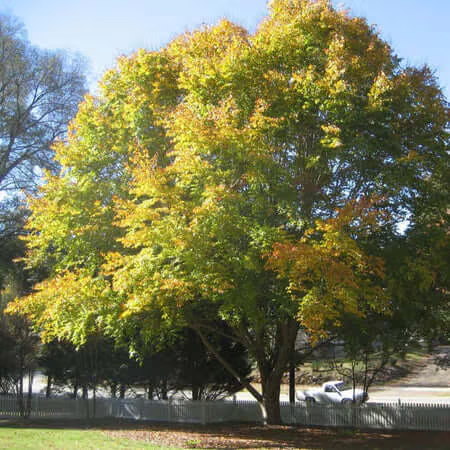
Shade and Cooling:
As they mature, American Beech trees provide ample shade, creating cooler and more comfortable outdoor spaces during hot summer months.
Wildlife Friendly:
The dense canopy and beech nuts provide habitat and food for various wildlife, making your garden a haven for birds and small animals.
Elegant Appearance:
American Beech seedlings develop into trees with smooth gray bark and vibrant, golden fall foliage, adding a touch of warmth and color to the surroundings.
Impressive Size:
A mature American Beech tree can reach up to 130 feet tall and 70 feet wide, with its distinctive grayish bark setting it apart from the more common black or brown bark of other tree species.
Caring Tips
How do I care for my American Beech Seedlings?
Each box contains detailed care instructions and information about your product. But here's the basics.
Care Tips
American Beech seedlings thrive in well-drained, loamy soil and prefer slightly acidic conditions. Water regularly, especially in the first few years, to establish a robust root system. Mulch the base to maintain moisture and repress weeds.
Light Requirements
American Beech seedlings thrive in partial to full shade, preferring filtered sunlight. While they can tolerate some direct sun, especially in the morning, too much sunlight can stress young seedlings. They naturally grow under a forest canopy.
Hardy Planting Zones
3 • 4 • 5 • 6 • 7 • 8 • 9
Header
Use this content to share information about your store and products.
Frequently Asked Questions
How often should I water my plants?
How do I know if my plant is getting too much or too little sunlight?
What should I do to prepare my plants for winter?
What are the signs that my plant needs fertilizing?
How can I prevent pests from damaging my plants?
How do I choose the right plant for my climate zone?



